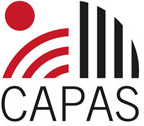Special Issue "Biopolitics of Time"

Picture: "Broken clock or blocked time?", by FiJRosa, CC-By-NC-SA 3.0
Apocalyptica is an international, interdisciplinary, open-access, double-blind peer-reviewed academic journal published by the Käte Hamburger Centre for Apocalyptic and Post-Apocalyptic Studies (CAPAS) at Heidelberg University.
- Editors: Jenny Stümer, Robert Folger, Felicitas Loest, and Bruna Della Torre
- Special Issue editor: Jenny Stümer
- Deadline: Abstracts (250 words) are due 20 September 2025
- Contact: publications@capas.uni-heidelberg.de
Special Issue: Apocalypse and the Biopolitics of Time
“In these troubling times, the urgency to trouble time, to shake it to its core, and to produce collective imaginaries that undo pervasive conceptions of temporality that take progress as inevitable and the past as something that has passed and is no longer with us is something so tangible, so visceral, that it can be felt in our individual and collective bodies.”
Karen Barad
“That things just go on is the catastrophe.”
Walter Benjamin
Politics at the end of the world is a struggle over time. Not just in the sense that time is either running out or becoming a resource that enables the very making of politics (debates, protest organizing, it all takes time) but in the sense that within a normative project of the taken-for-granted structures of existence all kinds of temporal formations no longer befit the unified axis of a singular unfolding of time. Catastrophe, instead, manifests in the experience of an enduring and unfinished past, increasingly contentious battles for ‘a’ future, and efforts to grasp the ambiguity, precarity, and turbulence of an ever-shifting present.
Such debates unveil the mechanics of politicizing time itself, exposing temporality as a construct that props biopolitical discipline: Time in the end times works as a hidden rhythm that organizes human life according to the scaffolds of hegemonic power. In this sense, ‘the end of time’ does not inevitably denote extinction but rather proclaims a particular urgency to trouble time itself.
Making sense of apocalyptic times, then, does not amount to pinpointing the end that neatly punctuates a finite, unsustainable world. In fact, far from dreaming its own demise, capitalism expands power through the endless construction, classification, and contention of specific forms of ‘life’ – often through unending exclusion, erasure, and annihilation. Similarly, colonialism, in its various reiterations, compulsively renews itself through the structural, discursive, and material castigation of individual and collective bodies in a context of progressive violence that either slows down or accelerates the health and vitality of some while designating others to dispossession and death.
Seen in this light apocalypse intimates the time of biopolitics or biopolitical time, precisely because temporality itself has become a marker, and sometimes the motor, of catastrophe. The biopolitics of time translate power into meaningful embodiment such that time can feel apocalyptic. Simultaneously, apocalypse may also be precisely that which pulls these normative structures into a shattering (or rethinking) of the world.
In this special issue, we seek submissions that explore the temporal aspects of apocalyptic biopolitics. We are looking for engagements with critical moments of undoing or unveiling pervasive conceptions of time. We want to draw attention to the social and material cracks in the chrono-political project, critically evoking the deeply racialized, gendered, and classed genealogies of temporal discipline. And we are curious about different scales of temporal regulation and domination as they affect individuals, communities, and worlds.
Most importantly we are interested in considering the biopolitics of time through the lens of apocalypse, both in terms of an eschatological event or revelation and a historical experience of world-ending scenarios.
If apocalypse breaks the world, then what can it tell us about these arrangements of time? How can apocalypse work to critically understand and perhaps re-examine the biopolitics of time? What other temporalities are thinkable at (or with) the end of the world? What are the emotional and cultural vectors of biopolitical temporalities in the context of world-ending catastrophes? When (and why) do the biopolitics of time cease to work? In what contexts do they firmly hold their grip? Under what conditions do engagements with time as biopolitical pulse invite (collective) actions or meaningful narratives about life, death and/or the end of the world?
We are particularly interested in contributions that unpack these prompts by intersecting discussions of biopolitics and time with feminist perspectives, post-colonial and peripheral viewpoints, queer approaches, and anti-racist imaginaries. We would like to learn how artists, filmmakers, and activists have tackled these questions and what genres lend themselves to reading and re-reading the biopolitics of apocalypse through the lens of time in film, television, literature, music, comics, video games, but also satire, comedy, melodrama, etc. And, finally, we encourage considerations of the temporal materiality of biopolitics (body, pain, senses), the examination of specific political settings (Ukraine, Gaza, etc.), biopolitical technologies (media, AI, etc.) and the politics of time more broadly (the role of memory, archival politics, speculative engagements with futurity, etc.).
The special issue aims to rethink time as a function of biopolitical discourse under conditions of world-making and world-breaking. It is also an opportunity to reconsider the notion of apocalypse as and through time in a way that transforms how we think about biopower, its agents, practices, strategies, knowledges, and social effects.
Please submit your abstract (250 words) alongside a short biographical note (50 words) by September 20, 2025.
If your abstract is accepted, we will invite you to submit a full article by February 2026. Full articles will be about 8,000 – 9,000 words long (including an abstract of 250 words, 3-5 keywords, references, footnotes, etc.)
All submissions must use author-date reference style, 12pt font, and at least 1.5 line spacing. Please check our style guide prior to submission.







